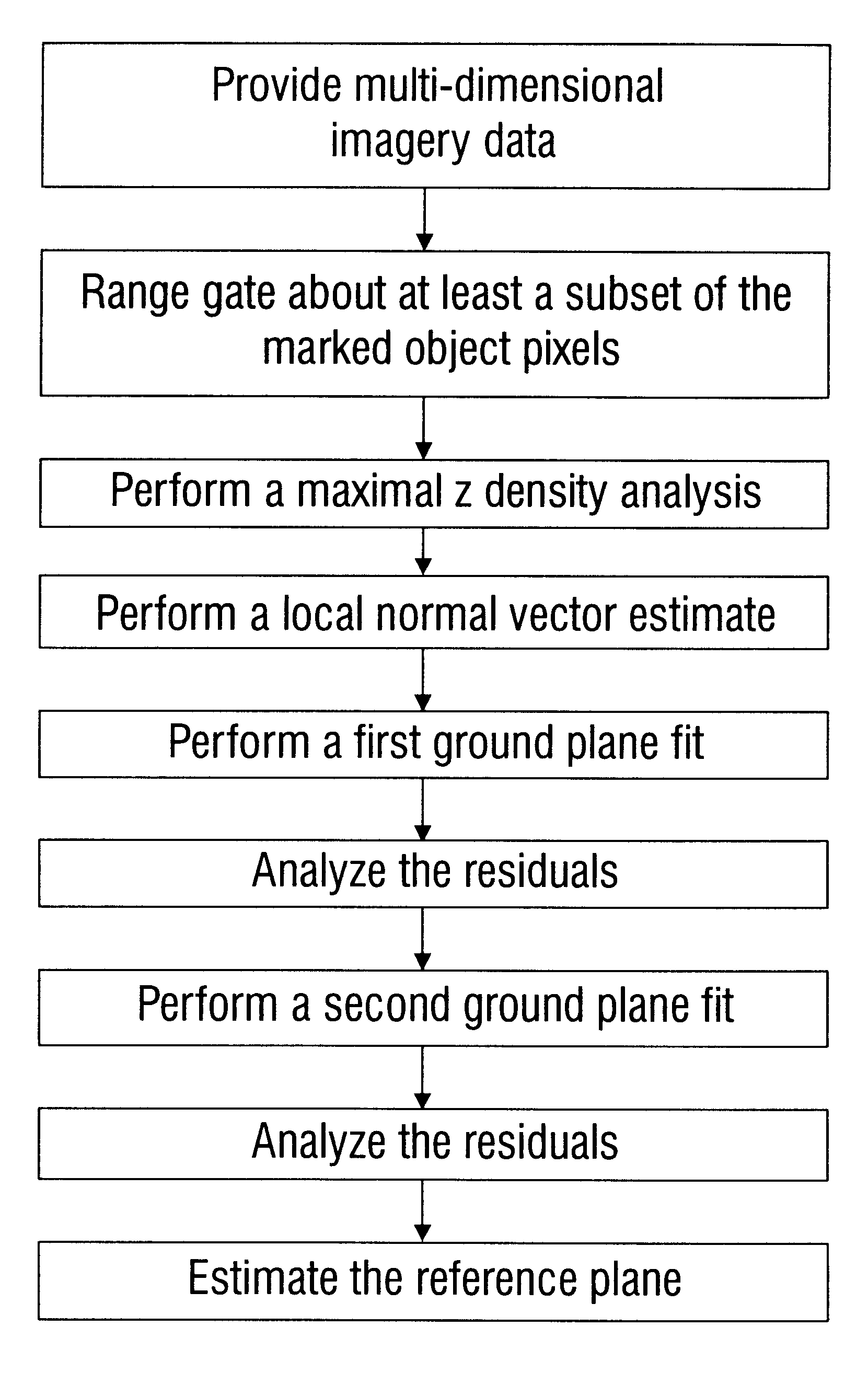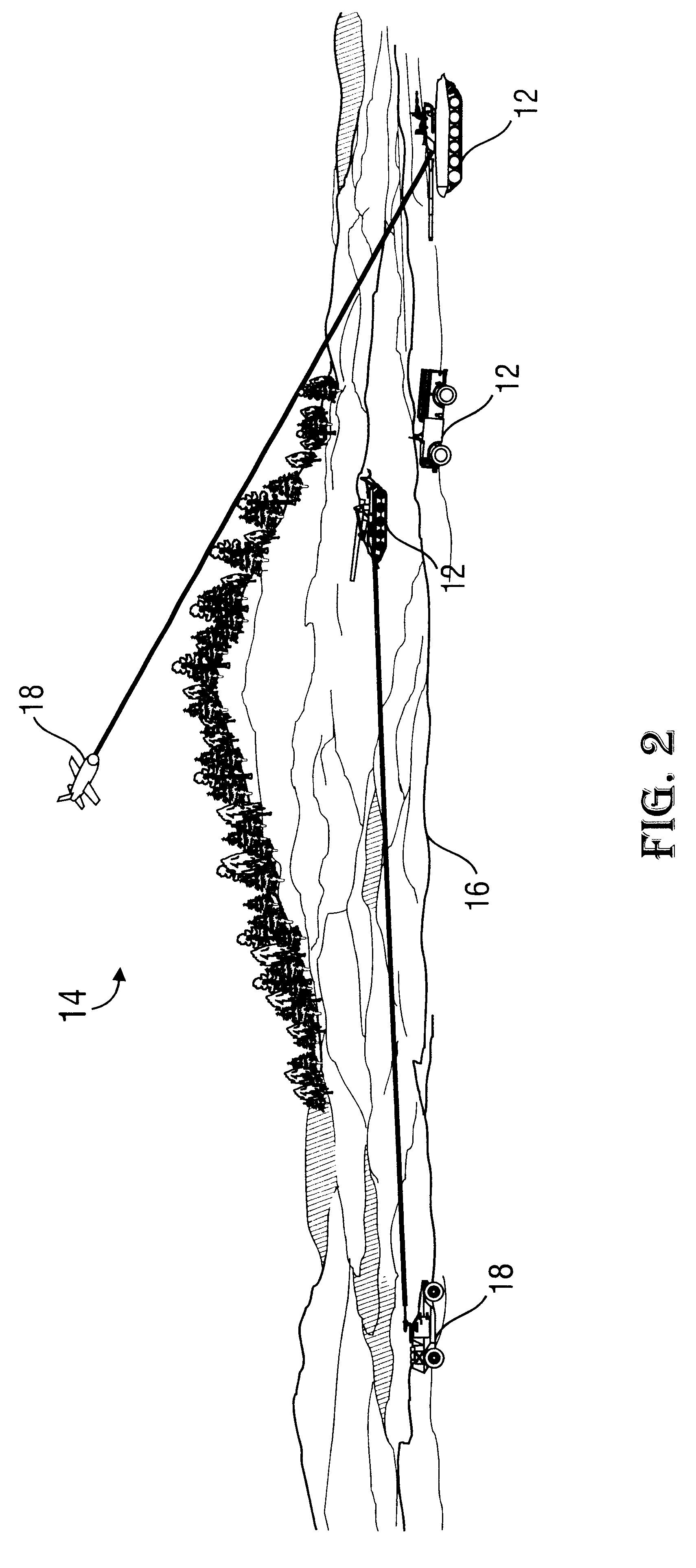Method and software-implemented apparatus for ground plane estimation in multi-dimensional data
a multi-dimensional imagery and ground plane technology, applied in image enhancement, image analysis, indoor games, etc., can solve the problems of erroneous feature extraction, inaccurate determination of the object-to-ground interface, and erroneous object segmentation
- Summary
- Abstract
- Description
- Claims
- Application Information
AI Technical Summary
Problems solved by technology
Method used
Image
Examples
Embodiment Construction
Numerous specific details are set forth below in the detailed description of particular embodiments in order to provide a thorough understanding of the present invention. However, one of ordinary skill in the art having the benefit of this disclosure will understand that the present invention may be practiced without many of the details presented since such details will be necessary or useful depending on the particular embodiment being employed. For instance, the invention is placed in the context of a complete ATR system including data acquisition and object detection to facilitate an understanding of the invention. Conversely, in other instances, well known details have not been described in detail for the sake of clarity so as not to obscure the invention. It will be appreciated that supplying such details would be a routine undertaking for those of ordinary skill in the art, even if a complex and time-consuming task, given the benefit of this disclosure.
5.1 Illustrative Method ...
PUM
 Login to View More
Login to View More Abstract
Description
Claims
Application Information
 Login to View More
Login to View More - R&D
- Intellectual Property
- Life Sciences
- Materials
- Tech Scout
- Unparalleled Data Quality
- Higher Quality Content
- 60% Fewer Hallucinations
Browse by: Latest US Patents, China's latest patents, Technical Efficacy Thesaurus, Application Domain, Technology Topic, Popular Technical Reports.
© 2025 PatSnap. All rights reserved.Legal|Privacy policy|Modern Slavery Act Transparency Statement|Sitemap|About US| Contact US: help@patsnap.com



